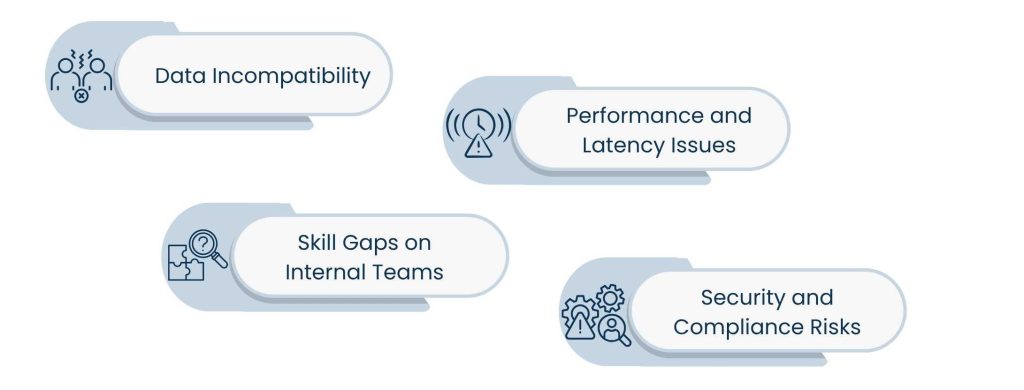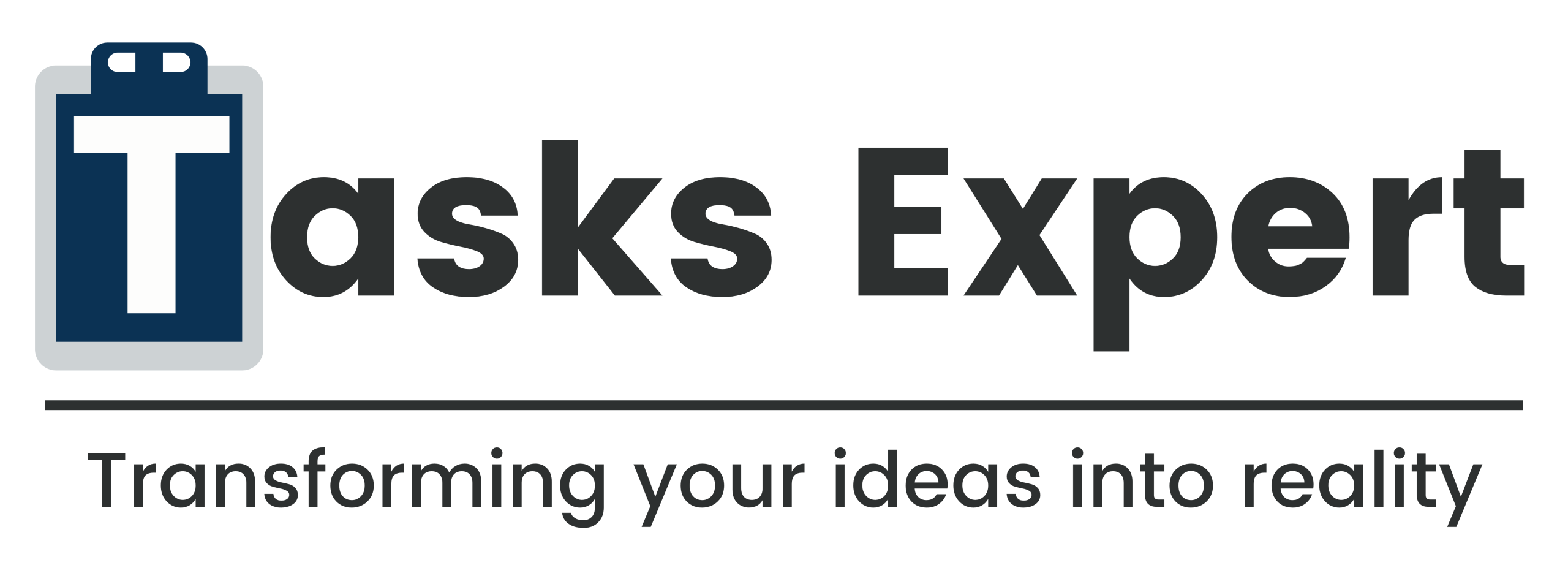Introduction
Most companies don’t need a complete tech retrofit to bring AI on board. The prospect of unleashing artificial intelligence on their operations is a daunting one; however, for most businesses, particularly when those operations rely on legacy systems. The truth is, you don’t have to start from scratch. If implemented correctly, layering a modern AI tech stack over your legacy system will allow you to achieve significant performance improvement from the existing workflow you already have in place.
Legacy systems provide a lot of benefits, decades worth of data, tried and tested processes, and in-depth operational knowledge. Forward-looking teams are now beginning to view them not as obstacles but as intrinsic foundations for true transformation. AI solutions can improve and advance these systems by automating repetitive tasks to unlocking predictive insights.
In the case of user-facing chatbots, internal process automation, or for a learning loop with domain-specific analytics using a generative AI tech stack, the best way to approach this is to go small and avoid expecting an instant, perfect solution. In this blog, we will cover how you can take practical and low-disruption approaches to AI when dealing with traditional tech, so that all your old systems can become brand new!
How Legacy Systems Don't Have To Hold You Back?
It is often mistaken that to implement AI, you have to rip out all your current infrastructure and build from the ground up. That’s a common misconception. The majority of those companies (especially if they have been around for a decade or more) operate on a blend of legacy systems — ERPs, CRMs, or custom-built tools. Typically tied to day-to-day operations and long-running, these platforms often include years of business-critical data. This is not only costly, but it is also disruptive and dangerous.
And the good news is, you do not have to rebuild to start moving forward again.
The AI tech stack should complement your core systems rather than replace them, and instead of looking at legacy software as old, broken stuff (or otherwise incompatible), start viewing it as reliable infrastructure. The problem with that base knowledge is how quickly you can accumulate and type all of the information, and how good your memory is. What AI provides is a way to make all of that basic info smarter, quicker, and in real time.

You can deliver, introduce AI components by layering them into your existing stack:
- Predictive analytics that forecast future trends or customer behavior.
- Generative AI tech features such as chatbots.
- Workflow enhancements like Intelligent routing, Prioritization, and Anomaly detection.
You are not rebuilding operations; You are augmenting decision-making and automation with the systems you already rely on.
This has one major advantage that it provides an easier path for AI adoption.
- Current teams, repeatable process as is.
- Minimal retraining or onboarding.
- Shortest route to value with quantifiable gains.
The trick is to think of legacy systems not as a stop sign, but something akin to your scaffolding. Today, with the advent of APIs, connectors, and middleware all more readily available than ever before, integrating AI into legacy environments need not be a technical migraine. It’s a strategic opportunity.
Remember, do not let your current infrastructure stop the innovation. Allow your AI tech stack to connect with your existing systems — and elevate them to the next level.
First, Find the Use Cases, Not the Tools
Instead of plunging into which frameworks, models, or even software to consider, the first question to ask is:

Where in your existing workflow can AI truly give you a benefit?
This is what many teams do wrong. But even though they are excited about tools (GPT, TensorFlow, LangChain, and so on — yes, I made this one up), they forget to connect them to real problems that one can measure. Lacking concrete use cases exposes you to building too much, burning resources for no reason, or overcomplicating where simplicity is sufficient.
Go after business goals, not tools, while baking or layering an AI tech stack.
Anywhere AI generally adds value.
Some Examples:
- Customer support: If your team is taking several hours just to respond to redundant questions or tickets — Go for a chatbot powered by generative AI tech stack like OpenAI + vector search prompt control.
- Finance and operations: AI can be used to detect payment fraud before it happens, anticipate future cash flow, or streamline invoice approvals. These are not large system changes; they are more like micro wins that add up to real efficiency.
- Logistics and planning: Whether for field team scheduling or delivery routes optimization, AI models trained on historical data enable you to predict the most optimal paths in different situations, inform about delays, or reassign resources.
- Sales & marketing: AI can notify you which leads to focus on, do outreach for you, or even create marketing content — saving your team hours and improving targeting.
This allows you to apply AI where it matters, removing your pain points or burning time. And then you can trace back to pick models, APIs, and tools that will fit into your real needs.
Begin small, remain laser-focused, and base your AI roadmap on use cases — not the hype, not the flavor of the moment; and never someone else’s tech stack.
The handbook of successful AI integration with legacy systems
When you have begun to understand how AI can add real value, the next step is to determine what process capability you have (where that technology fits), and then it will be about integrating that into your existing systems without breaking them. The good news is, you do not have to re-architect your tech stack to make the most of a smart AI tech stack.
There are also a few pragmatic ways to embed AI in your existing legacy workflows, and which way to go will ultimately depend on how technically savvy your team is, how fluid the systems you build on top of those rules are, and how quickly you want results.

1. API-Driven AI Services
The easiest way is to split it up like that. Like the AI builders, much of this generative AI tech stack is already available as pre-built APIs by an array of vendors. It allows you to integrate smart capabilities into your simple legacy software without the need to rewrite the back end.
Examples:
- CRM-integrated GPT bot.
- Extract data from scanned documents using OCR and computer vision APIs.
- Analyze historical sales data with a call to an AI forecasting model.
It’s rapid, low-cost, and relatively non-overhauling.
2. Middleware & Integration Platforms
If your systems don’t understand the way modern AI tools talk to them, middleware can be used to interpret between these languages. Zapier, Make, etc. are some forms of integration platforms that provide for moving data between various systems and AI models in real time.
Use cases:
- Your AI-powered analytics dashboard is seamlessly populated with customer data from your ERP.
- Turn legacy database formats into inputs that AI can read.
Build workflows that automatically pull from and write back to multiple systems
3. Create a Seamless Workflow Microservices Architecture
In addition to the stronger technical levels, this is a better plan as you can introduce AI as microservices into your workflows if you want to realize those benefits without making monolithic code changes. So what you can do is that you put this into a small service which will do just 1 thing well, so when we say, Real AI as a microservice, decrement the value field advertisement.
Think:
- Fraud detection engine, based on the attached finance system.
- A product recommendation module for your e-commerce backend.
- Translation layer in languages for support tickets.
The right integration path and your legacy systems come alive like never before, fueled by AI.
4. Microservices architecture
Split large workflows into smaller micro-services where it makes sense, and if your tech team is capable of providing such units. You only bring AI components where you need them.
- Writing a dedicated service for fraud detection.
- Develop a recommendation engine that communicates with your legacy CRM.
This will work as a system-level bolt-on and enable you to instill AI stepwise, without having to dismantle the entire system.
Problems to Anticipate and How to Resolve Them
While AI has the potential to unleash significant value into your pre-existing systems, it is not as simple as a plug-and-play. When trying to synchronize and incorporate components from a modern AI tech stack into older or unmovable platforms, here are some bumps you should expect. Ironically, the goal isn’t to avoid challenges together—it’s to anticipate them ahead of time so they don’t trip you up.
The Top Roadblocks Businesses Face & How To Deal With Them.

1. Data Incompatibility
Legacy contains outdated formats, an assemblage of data, or disarrayed storage solutions. Directly feeding it into an AI model will produce poor outputs.
Solution:
- Clean and Normalise Input using data transformation tools.
- Use middleware to manipulate data between systems (to make sure it’s formatted correctly and gets in the right places).
- Simplified Transforms data from your legacy software — using the UDF component — so it can be read by APIs as needed (I.e., CSV, JSON).
2. Skill Gaps on Internal Teams
If your internal team is not well-versed in AI technology, the addition of it can seem daunting or, even worse, get relegated to the back burner.
Solution:
- Low Code/No Code Tools, Managed AI platforms like Google Vertex AI or Basic AI training for ops and tech teams.
- Build your first AI module with an outside partner and train your team for further iterations.
3. Performance and Latency Issues
Certain computations in the case of AI require significant processing or real-time response. In older systems, it can slow or time them out.
Solution:
- Serve commonly requested results from cache.
- Perform data preprocessing during idle hours.
- For example, you might want to deploy lighter AI models if your infrastructure is limited.
4. Security and Compliance Risks
If your legacy data is sensitive, integrating AI models — particularly third-party or generative AI tech stack services as a service — may raise compliance issues.
Solution:
- Always use encryption, access controls, and logging.
- Isolate PII in calls to external APIs.
- If compliance requirements dictate, use on-prem or private cloud AI solutions.
Dealing with such challenges directly can help you tackle the fearsome technical beast that is AI by providing the right tools and team support… but also confidence.
Legacy Data: Training on Custom Models
What is likely the single most valuable asset to which your company has exclusive access but is not utilizing as well as it should be is what you find in that historical data. Hidden in your CRM, ERP, old spreadsheets, or even internal knowledge base, this data mirrors how your business functions. When coupled with the correct tools from a modern AI tech stack, it is highly potent.
On the other hand, they are not tailored to your voice, customers, or to a specific industry. This is where you can train or retrain your autonomous AI model on legacy data, allowing you to further get a strategic edge.

Step 1: Legacy Data Extraction & Cleaning
It begins with surfacing the right datasets:
- Extract customer interactions from your CRM.
- Export of transactional logs from ERP systems.
- Collect internal records like SOPs, rule manuals, or call transcripts.
- Eliminates out-of-date, replica, or beside-the-point entries.
With the data collected, you will have to format and tag that data accordingly if you are doing supervised learning or building custom prompt-specific examples for LLMs.
Step2: Vector databases; for contextual memory
If you are developing on a generative AI stack, you can use GPT-4 or LLaMA as models most suitable for this task and have to add a layer of memory with a vector database.
- Tools like Pinecone, Weaviate, or FAISS allow you to hold and search the snippets of your old content as embeddings.
- These vectors also provide real-life, business-specific context into your LLM outputs in tandem with retrieval-augmented generation (RAG).
- This is what enables your chatbot/content generator/assistant to answer things based on how you do business.
Step 3: Train the model on your domain
Training/smaller model fine-tuning, and of course, as training is cheap in time and compute compared to retrieval. You can go further by training (or fine-tuning) smaller models outright on your clean data.
Benefits include:
- Better performance with industry-specific acronyms.
- Responses in the tone of your brand.
- Faster model performance, especially with smaller custom LLMs.
It allows your AI to be a real subject-matter expert, not only a generalist. Fine-tuning our models with legacy data does not involve starting anew — simply properly extracting, structuring, and intelligently gluing that together into your existing AI tech stack.
Conclusion
That AI is something new, and it only belongs to highly advanced, fairly cloud-native platforms. Today, enterprises in all industries are demonstrating the point that legacy systems have a place even among today’s best and brightest technologies if the strategy is executed correctly. This is not about rebuilding your infrastructure; it’s about a new way to run your existing infrastructure.
Identify the best use cases, apply modular tools from a contemporary AI tech stack, and layer these on top of your existing workflows, which unlocks automation, insights, and speed without having to uproot the systems your teams are already using.
Whether you are adding generative AI to your customer support or training custom models on historical data from double-digit years of operational history, integration with the freehand environments of yore is entirely achievable. We do it with planning, controlling, and tools that work with your business, not against it.
Thus, do not be intimidated by your legacy systems. Think of them as the basic AI that can be improved upon. You don’t have to start your operations from scratch with a few smart strategies. And they deserve an upgrade, which is exactly what AI is, and how you do so.
About Us
Tasks Expert offers top-tier virtual assistant services from highly skilled professionals based in India. Our VAs handle a wide range of tasks, from part time personal assistant to specialized services like remote it support services, professional bookkeeping service etc. Furthermore, it helps businesses worldwide streamline operations and boost productivity.
Ready to elevate your business? Book a Call and let Tasks Expert take care of the rest.









